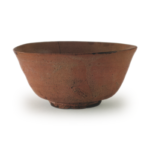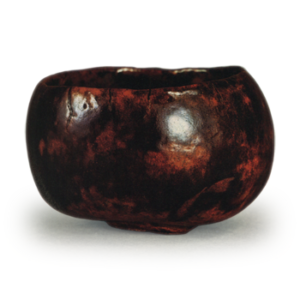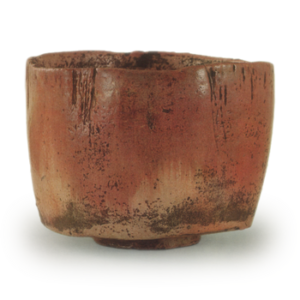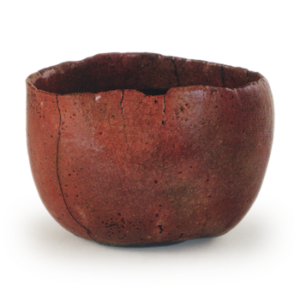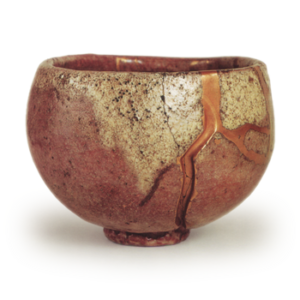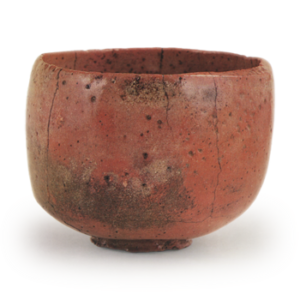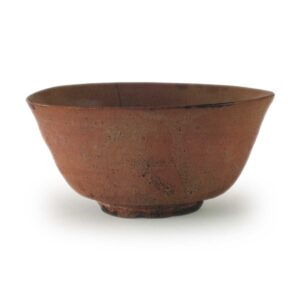
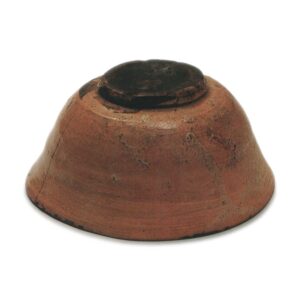
Daimyo-mono
Collection: Fujita Art Museum
Height: 6.3 – 6.6 cm
Diameter: 13.8 – 14.0 cm
Outer diameter of foot: 5.7 cm
Height of foot: 0.8 cm
The origin of this tea bowl is said to be the Tōya ware, but in terms of style, it differs greatly from the Tōya ware that is usually referred to. In his book Yukimaso, Toda Rogen also wrote about this, saying, “The Toto-ya that people talk about is different from the Toto-ya that is made in the old Korean style, and it is even more beautiful than the Toto-ya that is made in the old Korean style. The term “Kokomai” refers not only to the age of the tea bowl, but also to the difference in style of the tea bowls, and the intentionality of the tea bowls, and it is understood to suggest the original, innocent charm of Korea. Indeed, these tea bowls by Rikyu and Tōya are excellent tea bowls that are worthy of the history of the tea bowls that were passed down from Shōō and Rikyu, and they are tea bowls that are praised for their broad and tranquil beauty. As an anecdote related to this, the “Sōyūki” (a book of anecdotes about the tea ceremony) tells us that “Shōgen-dono (Sakuma) said that even if you collected all the tea bowls in Japan, you would still not have enough to fill one hand. This tea bowl vividly shows the taste for the simple Korean tea bowls of the Shōō and Rikyū eras.
By the way, the tottoya (pottery) that is commonly known, and in particular the kind of pottery known as honte tottoya, should clearly be seen as a type of formal tea bowl, and is a kind of honte tottoya, or so to speak, Enshu honte, but how should the relationship between Rikyu tottoya and these be viewed? In the general guidebook “Kichisa” compiled in the 7th year of the Genroku era, the name Totoya (Taira) does not appear, and instead the old name Zarameki is mentioned. This is probably because the name Totoya (hand) was already in use, but it was not yet well known in the world, but this is probably because (Rikyu) Totoya was initially known to some as a specific tea bowl owned by the Sakai tea master Uoya It is thought that the name was originally used to refer to a specific tea bowl owned by the tea master Enshu, and that for some reason it later became associated with the name of the tea bowl called “zarameki-te”, and that this is the reason why the name “totoya” came to be used instead. Rikyu and Tōya are listed first in the tea bowl section of the Enshū Zōchō, and were considered the Kobori family’s most treasured tea bowls. According to the Kobori family’s secret oral tradition, at the time of the Osaka campaign, this tea bowl passed through the hands of Shōō and Rikyū before coming into the possession of Oribe, but on the night before the fall of Osaka, Oribe visited the Enshū camp and presented the tea bowl, along with a bag, as a keepsake to be kept secret for a long time . It was a particularly treasured bowl, and even Enshu, out of consideration for the world, only wrote “Toya” on it, but it was truly a precious treasure that could be called a sacred object of transmission in the tea ceremony. It is thought that the above history is very much involved in the transition of the name from “zarameki” to “Toya”. The only surviving piece of Enshu’s “Toya” calligraphy is this bowl, and the old box for the Edo Toya tea bowl bears the inscription “Kora Hadaka Te Chawan” (the word “Hadaka Te” is sometimes seen), but this suggests that the Toya name was not yet being used outside of the Rikyu and Toya tea bowls during the Enshu period.
Rikyu and Tōya are thinly made with a gentle appearance, and have a light, translucent glaze on a pale brown, fine clay body. The glaze is light brown in color, and the front has a white glaze with a rough surface and a pattern of ridges, giving the appearance of being underfired. The foot ring is thin and flat, and the inside is rounded off and hollowed out to form a bamboo joint. The tatami mat is chipped in two or three places. The inside is wide and spacious, with a step, and there are four marks in the tea pool. Overall, it is a gentle piece with a simple design, but it has an endless appeal.

